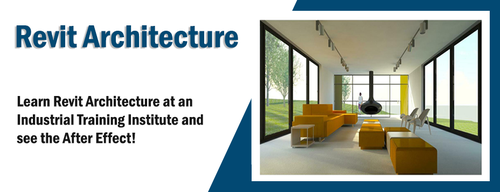Revit Architecture
is a software application used by structural technicians, engineers,
and builders. Developed by Autodesk, it is a Building Information
Modeling (BIM) system. Engineers use this tool to model structures
before construction. The software allows quick prototyping of structure
models. Building personnel can document their research and distribute it
for analysis. Information about a project can be stored in a single
database file, which allows for better manage-ability.
Why businesses use Revit Architecture?
The inherent BIM is used for effective workflows for designing, planning, procurement and analysis of models. It is possible to estimate building timelines using this tool. This aspect expedites project completion within budget. Dynamic design changes can be analyzed. If there is a design change in one aspect of the model, these changes can be propagated across to other aspects as well. This allows for consistency across all models developed regardless of their size, dimensions, and structural complexity.
There are several inbuilt tools that expedite productivity and enhance efficiency. Aspirants can gain relevant exposure to these inbuilt features at a 6 Months Industrial Training institute. This software application has renowned and highly adopted features such as Physical Materials, Construction Modeling, and Autodesk 360 degree integration to name a few.
What are the salient benefits of using Revit?
One of the highlights of this application is that it enables quick analysis of complex structural problems. Using this tool, engineers can forecast future maintenance and enhancement activities. This helps them construct a cost model, and conduct feasibility studies. Essentially, using Revit enables technicians to create accurate building models. They can do this using the flexible and dynamic virtual environment.
 |
| Revit Architecture |
Why businesses use Revit Architecture?
The inherent BIM is used for effective workflows for designing, planning, procurement and analysis of models. It is possible to estimate building timelines using this tool. This aspect expedites project completion within budget. Dynamic design changes can be analyzed. If there is a design change in one aspect of the model, these changes can be propagated across to other aspects as well. This allows for consistency across all models developed regardless of their size, dimensions, and structural complexity.
There are several inbuilt tools that expedite productivity and enhance efficiency. Aspirants can gain relevant exposure to these inbuilt features at a 6 Months Industrial Training institute. This software application has renowned and highly adopted features such as Physical Materials, Construction Modeling, and Autodesk 360 degree integration to name a few.
What are the salient benefits of using Revit?
One of the highlights of this application is that it enables quick analysis of complex structural problems. Using this tool, engineers can forecast future maintenance and enhancement activities. This helps them construct a cost model, and conduct feasibility studies. Essentially, using Revit enables technicians to create accurate building models. They can do this using the flexible and dynamic virtual environment.










Excellent .. Amazing .. I’m satisfied to find so many helpful information here within the put up, we want work out extra strategies in this regard, thanks for sharing..
ReplyDeleteArchitectural Firms in Chennai
Architects in Chennai
it is very great and usable article. thanks for sharing this..
ReplyDelete6 months industrial live project training
I see some amazingly important and kept up to length of your strength searching for in your on the site
ReplyDelete360DigiTMG data analytics course
Here at this site actually the particular material assortment with the goal that everyone can appreciate a great deal.
ReplyDeletemachine learning course in malaysia